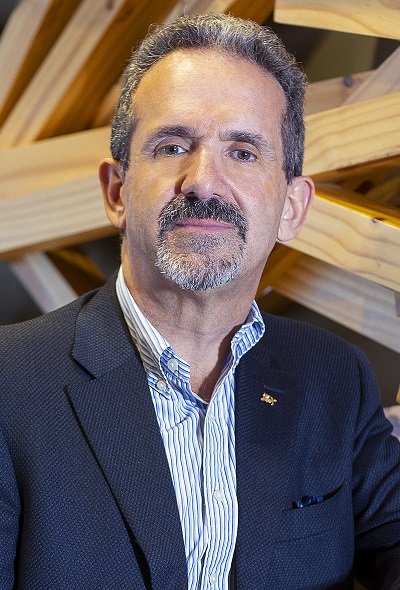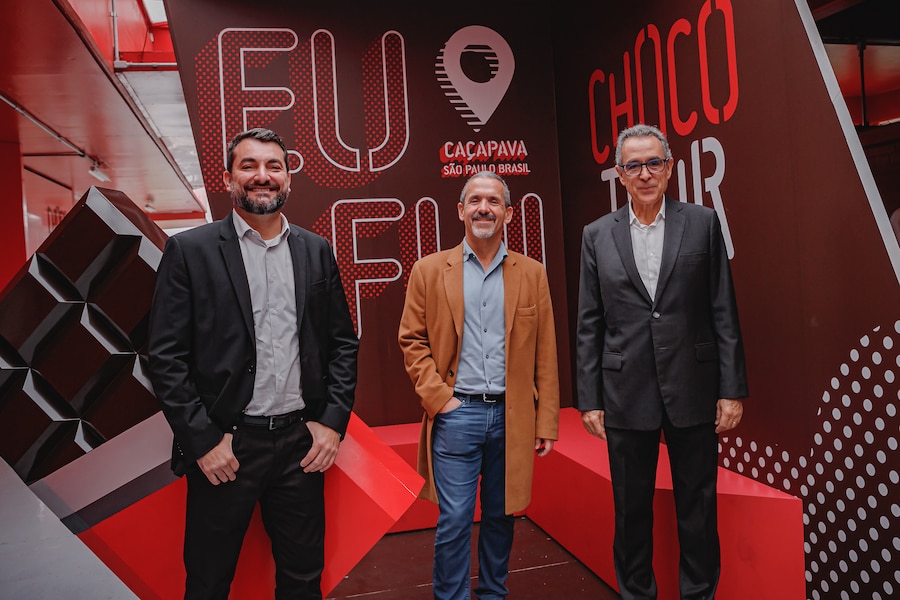This is the first time the state-of-the-art technology is being applied to Industry 4.0 in Latin America and at a Nestlé factory, with a 100% on-premises network architecture, which operates completely separately from the public mobile network.
Nestlé has recently completed the 5G SA implementation stage at its factory in Caçapava (SP), enabled by Embratel with 5G from Claro.
The company is using the private Ericsson 5G network technology (Private 5G) to achieve a network with secure 4G and high-speed 5G connectivity to drive the Digital Transformation of the industrial environment.
It is the first time a next-generation technology has been used in Industry 4.0 in Latin America and at a Nestlé plant worldwide, with 100% on-premises network architecture that operates fully separated from the public mobile network.
Nestlé Brazil has in its Caçapava plant an open innovation model for production acceleration. The company was looking for technological support for this journey and to help it evolve from an automated factory to an autonomous one.
Through the project, which uses experimental frequencies licensed by Claro, all the infrastructure components – from the antennas to the autonomous core network and the server – work on Nestlé’s premises.
It ensures that confidential data remains exclusively on the local network of the plant. The local connection of the Nestlé infrastructure also enables simple and fast data processing via the private network.
This autonomous ‘short distance’ 5G architecture is best applied to support business-critical applications that require ultra-short response times in the millisecond range.
Nestlé has been incorporating new lines, robots, automation and Augmented Reality over the past few years with benefits in productivity, efficiency and people utilization, achieving significant gains through Digital Transformation.
Also, new processes were enabled using Virtual Reality glasses that connect a unit’s employees with anyone in any country. With this technology, it is possible to conduct training on the use of newly arrived machines and new lines and receive guidance on equipment adjustments, improvements and remote maintenance, all without leaving the unit.
The equipment allows an outsider to check inside the plant, being able to even perform maintenance remotely. With 5G in place, this entire digital ecosystem will become more reliable, available and comprehensive.

Marcelo Melchior, CEO, Nestlé Brazil, said: “Nestlé’s national operation will be a reference in an unprecedented project in which it can enjoy, in practice, the benefits of 5G for Industry 4.0. With our partners, who have believed in this pioneering project from the beginning, we will provide even better optimization to the operation to achieve significant productivity and efficiency rates for the industry.
“This is another step in the journey of innovation and Digital Transformation conducted by Nestlé in the country at our Caçapava factory, known for developing new technologies applied in other industrial units of the company.”
Gustavo Moura, Digital Transformation Program Manager, Nestlé Brazil, said: “Some prominent advantages resulting from 5G technology for the industrial environment are the high data transfer rate, the possibility of connecting several devices in the same network, and the latency. The latency especially makes a big difference in our case because data will be transferred within the network up to 25 times faster than in 4G.
“These features provide a new reality to the industry that will change and simplify the physical factory environment. All partners involved are in a profound learning experience because we are starting from scratch, where everything is new. Soon, we will have the unique experience of already knowing how to do it.”
5G will also benefit Automated Guided Vehicles (AGVs). With reduced latency, the control of the equipment will occur almost in real-time and remotely, allowing it to be safer and preventing collision risks. In addition, it will facilitate a greater operational complexity, adding more AGVs and positively impacting the capacity of production in a plant. Finally, the use of 5G may promote a substantial increase in the volume of data in the future, allowing the integration of computer vision and Artificial Intelligence systems remotely.
The choice of Ericsson’s solution for this new project took into account its ability to be a dedicated private network. It features a cloud-based network management portal and troubleshooting application designed to meet the self-management needs of industrial Information Technology (IT) and Operation Technology (OT) users anywhere in the plant while keeping confidential data secure on site.
With the integration of the solution with Claro and Embratel’s 5G network, a project is being put into practice to expand the possibilities of plant automation for the use of new applications.

Rodrigo Dienstmann, President, Ericsson Latin America, said: “Ericsson’s 5G private network solution has been designed from the ground up to allow organizations to manage their networks and integrate with carrier management systems.
“Because the solution is highly resistant to intrusions and attacks, it ensures that business-critical operations meet the most stringent security requirements. With reliable and complete coverage throughout the site, indoors and out, Ericsson’s 5G private network solution offers connectivity with very low latency, high throughput and high density of connected devices per square meter.”
Dienstmann added: “This is an IT user-friendly solution that allows full control over the devices connected to the network without incurring any extra cost per gigabyte of data, meeting the new challenges and needs of industries which are advancing in the digital era journey.”
According to José Formoso, CEO, Embratel, the project seeks to take Nestle to the next level of digitalization, with the construction of a standalone factory to provide new opportunities for innovation and expand on-site productivity on all fronts of the unit.
“Embratel believes that 5G will be fundamental for Nestlé to advance in the concepts of Industry 4.0, putting into practice actions and projects with the proper infrastructure, support, stability and latency,” said Formoso.
“With the enablement of 5G in the factory, some innovations that are part of Nestlé’s investments will benefit, such as using robots, Augmented Reality and self-guided vehicles, increasing the plant’s operational efficiency. Moreover, there is still the possibility of implementing other new and very innovative applications. The installed ecosystem is fully integrated with the company operations so that the factory will take full advantage of this created value chain.”
The partnership between Nestlé, Claro, Embratel and Ericsson was signed at the end of last year, starting a pilot program developed initially at the Technological Park São José dos Campos, connected with experimental 5G SA. The beOn Claro, Claro and Embratel’s innovation hub and Ericsson’s R&D&I team played a crucial role in designing and implementing a sustainable open innovation ecosystem.
Rodrigo Modesto Duclos, Director of Digital Innovation at Claro and Founder of beOn Claro, said: “Claro and Embratel believe in joint development of solutions and ventures as the main way to create applications that have the potential to generate impact on the economy and society.
“The companies bet on the interaction and dialogue with other agents of the open innovation community to establish initiatives that generate ventures based on hardware and software that solve problems innovatively and efficiently and that can serve various sectors. The partnership with Nestlé is fundamental for us to advance in practical applications of Industry 4.0, focused on results.”


